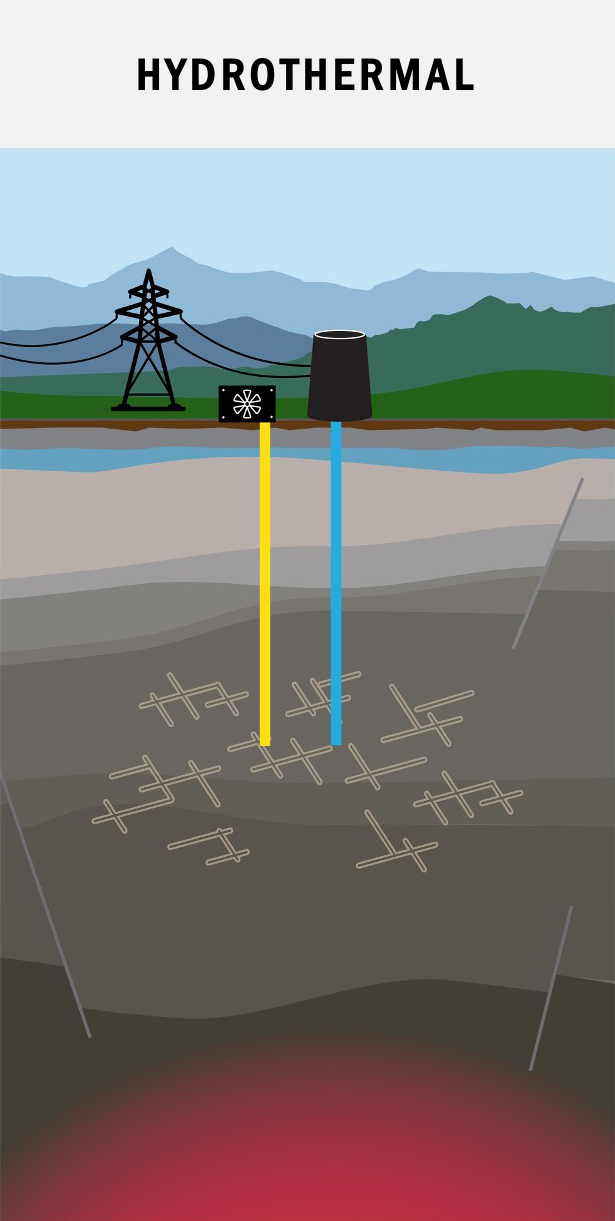What Are Hydrothermal Resources?

The natural formation of a hydrothermal resource requires three principal elements: heat, water, and permeability. When water is heated in the earth, hot water or steam is trapped in porous and fractured rocks beneath a layer of relatively impermeable caprock, resulting in the formation of a hydrothermal reservoir.
If the conditions underground are right, humans can harness that geothermal hot water or steam by drilling and then bring it to the surface to generate electricity. These types of geothermal systems typically occur close to tectonic plate boundaries, like in the western portions of the United States. Sometimes the resource is easy to find because of indicators on the surface like hot springs. Other times, conventional geothermal resources are “hidden,” with no signs of the underground reservoir on the surface.
Hydrothermal resources are considered conventional geothermal resources because they can be developed using existing technologies and do not require creation of human-made reservoirs as needed with enhanced geothermal systems.
Hydrothermal Resources Program
Looking for and accessing hydrothermal resources—even those with surface expressions—can be challenging and expensive. The Geothermal Technologies Office (GTO) funds research, development, and demonstration of tools and methodologies to reduce the costs and risks of exploring and drilling for hydrothermal resources.
GTO’s Hydrothermal Resources program focuses on improving geothermal exploration, subsurface characterization, and drilling to reduce overall geothermal deployment costs. The program also includes researching value-added activities, such as the extraction of valuable critical materials like lithium from geothermal fluids.
Examples of projects the Hydrothermal Resources program supports include:
Drilling Demonstrations Initiative
Regional Partnerships for Geothermal Data
American-Made Geothermal Lithium Extraction Prize
Learn more about hydrothermal initiatives on GTO's Funding Opportunities page.

Lithium Extraction
Lithium is a soft, light metal that is prominent in rechargeable batteries such as those used in cell phones and electric vehicles. Just 1% of the lithium used in the United States is currently sourced domestically, but geothermal energy presents an opportunity to expand U.S. supplies.
Hot salty water, or geothermal brine, is pumped to the surface to generate electricity, but those brines can also yield lithium. GTO is working on ways to extract lithium from brines in places like the Salton Sea Known Geothermal Resource Area (KGRA) in California—potentially offering the United States a domestic supply of this critical mineral.
In 2023, GTO funded a Lawrence Berkeley National Laboratory analysis to quantify and characterize the lithium resource in California’s Salton Sea region, including current and future amounts of lithium that may be recovered in geothermal brines, preliminary estimates of the effects of extraction on lithium concentrations, and potential environmental impacts of expanding lithium extraction operations in the region. Check out the fact sheet to learn more.
GTO emails bring funding opportunities, events, publications, and activities directly to your inbox.

